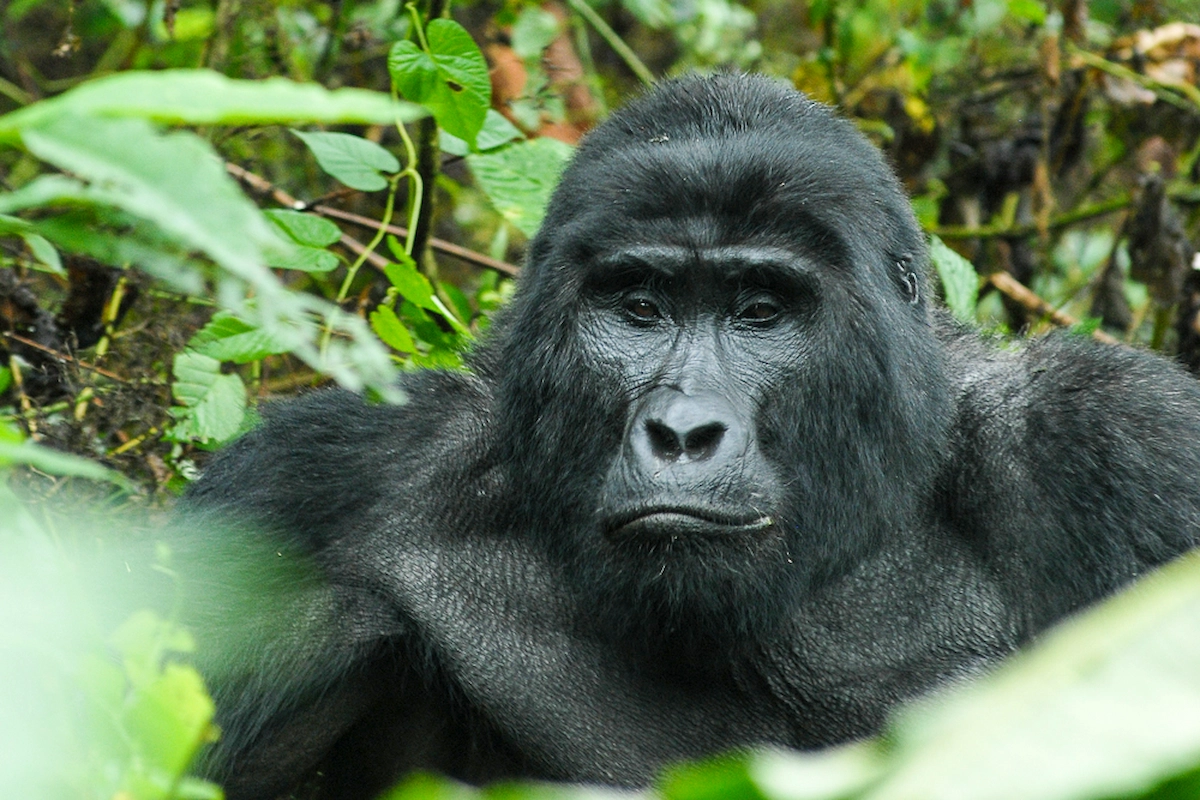
Explore Tanzania and Uganda's wildlife with a 14-day safari, including gorilla trekking, primate adventures, and thrilling safari experiences.
What to See:
- Murchison Falls National Park: Known for the spectacular Murchison Falls, where the Nile River squeezes through a narrow gorge and drops over a cliff, creating an awe-inspiring waterfall. You’ll also enjoy thrilling game drives and boat safaris on the Nile, where you can spot elephants, giraffes, buffaloes, crocodiles, and a variety of bird species.
- Ziwa Rhino Sanctuary: A special detour on this safari, where you can get close to the endangered white rhinos in a sanctuary dedicated to their protection. You’ll have the opportunity to walk up close to these majestic animals and learn about conservation efforts.
- Kibale Forest National Park: Renowned for its chimpanzee trekking experience, Kibale offers a chance to get up close with wild chimpanzees in their natural habitat. The forest is also home to a variety of other primates, such as red-tailed monkeys, grey-cheeked mangabeys, and black-and-white colobus monkeys.
- Queen Elizabeth National Park: This park is teeming with diverse wildlife and offers game drives, boat safaris on the Kazinga Channel, and the chance to see tree-climbing lions in Ishasha. You can also spot elephants, buffaloes, hippos, and a variety of birds.
- Bwindi Impenetrable Forest: Known for its mountain gorillas, Bwindi is one of the best places in the world to experience gorilla trekking. Spending an hour with these incredible creatures is a once-in-a-lifetime opportunity. The forest is lush, filled with diverse plant life and other wildlife like forest elephants and rare bird species.
- Tarangire National Park: Famous for its giant baobab trees, Tarangire offers excellent wildlife viewing, including large herds of elephants, giraffes, lions, and cheetahs. The park’s diverse habitats, from open savannah to wetlands, support a range of animals, especially during the dry season.
- Serengeti National Park: One of the world’s most famous wildlife parks, Serengeti offers iconic game drives and the chance to witness the world-renowned Great Wildebeest Migration. You’ll see massive herds of wildebeest, zebras, and gazelles being pursued by predators like lions, cheetahs, and hyenas. The park is also known for its big cats.
- Ngorongoro Crater: A natural wonder and UNESCO World Heritage Site, Ngorongoro Crater is home to a high concentration of wildlife, including the Big Five (lions, elephants, buffaloes, leopards, and rhinoceroses). The crater’s diverse ecosystems, from grasslands to forests, offer a perfect setting for game viewing.
How to Dress on Safari: When going on a safari, comfort and practicality are key. Here’s what to wear:
- Neutral-colored clothing (khaki, green, brown) to blend in with the environment. Avoid bright colors or dark shades, as these can attract unwanted attention from insects or wildlife.
- Long sleeves and long pants to protect against sun exposure, insect bites, and thorny plants.
- Lightweight, breathable fabrics are ideal for the hot, dry parts of the safari.
- A light fleece or jacket for cool mornings and evenings, particularly in high-altitude areas like Ngorongoro Crater.
- Comfortable, sturdy footwear (hiking boots or sneakers) for walking safaris, treks in Bwindi, and uneven terrain.
- A hat and sunglasses to protect yourself from the sun.
- A waterproof jacket as it can rain unexpectedly, especially in Uganda’s rainforests.
What to Carry on Safari:
- Binoculars to spot wildlife from a distance and appreciate the finer details, like bird species.
- Camera and extra memory cards to capture the incredible landscapes and wildlife moments. A zoom lens is essential for close-ups.
- Insect repellent to protect yourself from mosquitoes, especially in areas like Kibale Forest and Queen Elizabeth National Park.
- Sunscreen to protect your skin from harsh sunlight during game drives.
- A small backpack for carrying essentials like water, snacks, a hat, and a camera.
- Personal medications and a basic first aid kit for any unforeseen circumstances.
- A refillable water bottle to stay hydrated in hot conditions.
- Rain gear (light rain jacket, umbrella) in case of unexpected showers.
Best Time to Travel & Safari Seasons: The best time for a Tanzania & Uganda Gorilla Primate Safari is during the dry season, although it varies slightly between the two countries.
- Uganda (Dry season: June to September and December to February): These months are best for gorilla trekking in Bwindi, as the trails are less muddy and hiking conditions are ideal. It’s also a great time for chimpanzee trekking in Kibale Forest and for viewing wildlife in Queen Elizabeth National Park and Murchison Falls.
- Tanzania (Dry season: June to October): This is the best time for wildlife viewing, especially in Serengeti, Tarangire, and Ngorongoro Crater, as animals congregate around water sources. The Great Migration is also best seen during this period (from July to October).
- Rainy season (March to May): While the rain can make trekking challenging, it also means fewer tourists and lush landscapes. In Uganda, it’s a time when the rainforest is particularly vibrant, and some animals are easier to spot due to the thick vegetation.
The Tanzania & Uganda Gorilla Primate Safari offers a unique combination of primate tracking, game drives, and cultural exploration. Whether trekking with gorillas in Bwindi, spotting elephants in Tarangire, or witnessing the Great Migration in Serengeti, this safari is an opportunity to experience the best of East Africa’s natural beauty and wildlife. The diverse landscapes, incredible animals, and intimate encounters with nature make this an unforgettable experience.